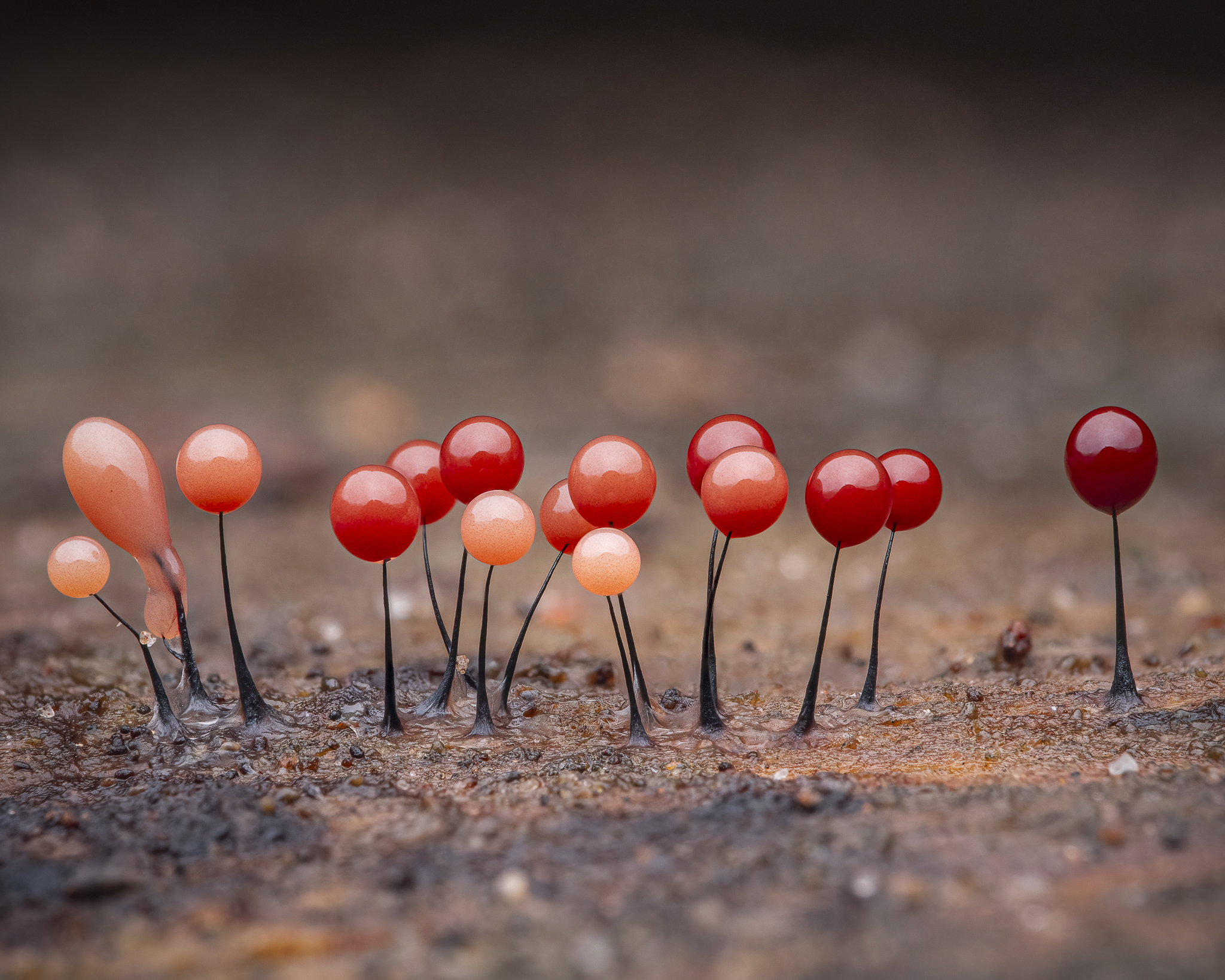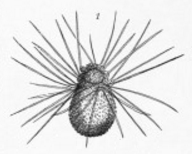|
Protistan
A protist ( ) or protoctist is any eukaryotic organism that is not an animal, land plant, or fungus. Protists do not form a natural group, or clade, but are a paraphyletic grouping of all descendants of the last eukaryotic common ancestor excluding land plants, animals, and fungi. Protists were historically regarded as a separate taxonomic kingdom known as Protista or Protoctista. With the advent of phylogenetic analysis and electron microscopy studies, the use of Protista as a formal taxon was gradually abandoned. In modern classifications, protists are spread across several eukaryotic clades called supergroups, such as Archaeplastida ( photoautotrophs that includes land plants), SAR, Obazoa (which includes fungi and animals), Amoebozoa and " Excavata". Protists represent an extremely large genetic and ecological diversity in all environments, including extreme habitats. Their diversity, larger than for all other eukaryotes, has only been discovered in recent decades ... [...More Info...] [...Related Items...] OR: [Wikipedia] [Google] [Baidu] |
Rhizaria
The Rhizaria are a diverse and species-rich clade of mostly unicellular eukaryotes. Except for the Chlorarachniophytes and three species in the genus '' Paulinella'' in the phylum Cercozoa, they are all non-photosynthetic, but many Foraminifera and Radiolaria have a symbiotic relationship with unicellular algae. A multicellular form, ''Guttulinopsis vulgaris'', a cellular slime mold, has been described. This group was used by Cavalier-Smith in 2002, although the term "Rhizaria" had been long used for clades within the currently recognized taxon. Being described mainly from rDNA sequences, they vary considerably in form, having no clear morphological distinctive characters ( synapomorphies), but for the most part they are amoeboids with filose, reticulose, or microtubule-supported pseudopods. In the absence of an apomorphy, the group is ill-defined, and its composition has been very fluid. Some Rhizaria possess mineral exoskeletons ( thecae or loricas), which are in diffe ... [...More Info...] [...Related Items...] OR: [Wikipedia] [Google] [Baidu] |
Stramenopiles
The stramenopiles, also called heterokonts, are Protist, protists distinguished by the presence of stiff tripartite external hairs. In most species, the hairs are attached to flagella, in some they are attached to other areas of the cellular surface, and in some they have been secondarily lost (in which case relatedness to stramenopile ancestors is evident from other shared cytological features or from genetic similarity). Stramenopiles represent one of the three major clades in the SAR supergroup, SAR Supergroup (biology), supergroup, along with Alveolate, Alveolata and Rhizaria. Stramenopiles are Eukaryote, eukaryotes; most are single-celled, but some are multicellular including some large seaweeds, the brown algae. The group includes a variety of algal protists, heterotrophic flagellates, opalines and closely related proteromonad flagellates (all Endosymbiont, endobionts in other organisms); the actinophryid Heliozoa, and oomycetes. The tripartite hairs characteristic of the ... [...More Info...] [...Related Items...] OR: [Wikipedia] [Google] [Baidu] |
Slime Mold
Slime mold or slime mould is an informal name given to a polyphyletic assemblage of unrelated eukaryotic organisms in the Stramenopiles, Rhizaria, Discoba, Amoebozoa and Holomycota clades. Most are near-microscopic; those in the Myxogastria form larger plasmodial slime molds visible to the naked eye. The slime mold life cycle includes a free-living single-celled stage and the formation of spores. Spores are often produced in macroscopic multicellular or multinucleate fruiting bodies that may be formed through aggregation or fusion; aggregation is driven by chemical signals called acrasins. Slime molds contribute to the decomposition of dead vegetation; some are parasitic. Most slime molds are terrestrial and free-living, typically in damp shady habitats such as in or on the surface of rotting wood. Some myxogastrians and protostelians are aquatic or semi-aquatic. The phytomyxea are parasitic, living inside their plant hosts. Geographically, slime molds are cosmopo ... [...More Info...] [...Related Items...] OR: [Wikipedia] [Google] [Baidu] |
Hemimastigophora
Hemimastigophora is a group of unicellular, single-celled eukaryotic organisms including the Spironematellidae, first identified in 1988, and the Paramastigidae. Over the next 30 years, different authors proposed placing these organisms in various branches of the eukaryotes. In 2018 Lax ''et al''. reported the first genetic information for Spironemidae, and suggest that they are from an ancient lineage of eukaryotes which constitute a separate clade from all other eukaryotic kingdom (biology), kingdoms. It may be related to the Telonemia. History of classification Hemimastigophora was established in 1988 by Foissner ''et al''., as a new phylum with a single family, Spironemidae. Its placement on the eukaryote Tree of life (biology), tree of life was unclear, but the authors suggested that the structure of its Pellicle (biology), pellicle and cell nucleus indicated a close relationship with Euglenozoa. For 30 years after the description of the group, no genetic informati ... [...More Info...] [...Related Items...] OR: [Wikipedia] [Google] [Baidu] |
Fungi
A fungus (: fungi , , , or ; or funguses) is any member of the group of eukaryotic organisms that includes microorganisms such as yeasts and mold (fungus), molds, as well as the more familiar mushrooms. These organisms are classified as one of the kingdom (biology)#Six kingdoms (1998), traditional eukaryotic kingdoms, along with Animalia, Plantae, and either Protista or Protozoa and Chromista. A characteristic that places fungi in a different kingdom from plants, bacteria, and some protists is chitin in their cell walls. Fungi, like animals, are heterotrophs; they acquire their food by absorbing dissolved molecules, typically by secreting digestive enzymes into their environment. Fungi do not photosynthesize. Growth is their means of motility, mobility, except for spores (a few of which are flagellated), which may travel through the air or water. Fungi are the principal decomposers in ecological systems. These and other differences place fungi in a single group of related o ... [...More Info...] [...Related Items...] OR: [Wikipedia] [Google] [Baidu] |
Ancyromonadida
Ancyromonadida or Planomonadida is a small group of biflagellated eukaryotes found in the soil and in aquatic habitats, where they feed on bacteria.Cavalier-Smith, T. (2013)Early evolution of eukaryote feeding modes, cell structural diversity, and classification of the protozoan phyla Loukozoa, Sulcozoa, and Choanozoa European journal of protistology, 49(2), 115-178. They are freshwater or marine organisms, benthic, dorsoventrally compressed and with two unequal flagellae, each emerging from a separate pocket. The apical anterior flagellum can be very thin or end in the cell membrane, while the posterior flagellum is long and is inserted ventrally or laterally. The cell membrane is supported by a thin single-layered theca and the mitochondrial crests are discoidal/flat. The group's placement is doubtful, as it seems to fall outside the five supergroups of eukaryotes. Cavalier-Smith considers that they constitute a basal group to Amoebozoa and Opisthokonta and places it togeth ... [...More Info...] [...Related Items...] OR: [Wikipedia] [Google] [Baidu] |
Malawimonadida
Malawimonads (order Malawimonadida) are a small group of microorganisms with a basal position in the evolutionary tree of eukaryotes, containing only three recognized species. They're considered part of a paraphyletic group known as "Excavata". Evolution It is clear that the malawimonads are a monophyletic clade at the base of Eukaryota, but there is no consensus on the specific relationships between other basal groups, such as Discoba, Metamonada, Ancyromonadida and Podiata. The sister group to Malawimonadida varies greatly between analyses. Some phylogenetic analyses find Malawimonadida as the sister group to Podiata. Other analyses recover Malawimonadida as the sister group of Discoba or Metamonada. Very few modern analyses recover the three clades, Malawimonadida, Discoba and Metamonada, as a monophyletic Excavata. Taxonomy History The malawimonads were first described as order Malawimonadida in 2003 by Thomas Cavalier-Smith. In 2013 they were also described as a cl ... [...More Info...] [...Related Items...] OR: [Wikipedia] [Google] [Baidu] |
SAR Supergroup
SAR is a highly diverse clade of eukaryotes, often considered a supergroup, that includes stramenopiles (heterokonts), alveolates, and rhizarians. It is a node-based taxon (under the Sar name), including all descendants of the three groups' last common ancestor, and comprises most of the now-rejected Chromalveolata. Their sister group has been found to be telonemids, with which they make up the TSAR clade. Harosa is sometimes used synonymously with TSAR. Etymology The name SAR is an acronym derived from the first letters of its three constituent clades; it has been alternatively spelled RAS. The term Harosa (at the subkingdom level) has also been used, with Stramenopiles replaced by its synonym Heterokonta in this variant of the acronym. History of discovery Before the discovery of the SAR supergroup, stramenopiles and alveolates were classified in the supergroup Chromalveolata alongside haptophytes and cryptomonads, being believed to have acquired plastids th ... [...More Info...] [...Related Items...] OR: [Wikipedia] [Google] [Baidu] |
Telonemia
Telonemia is a phylum of microscopic eukaryotes commonly known as telonemids. They are unicellular free-living flagellates with a unique combination of Cell (biology), cell structures, including a highly complex cytoskeleton unseen in other eukaryotes. Telonemia shares several distinctive features with its related group, the SAR supergroup, SAR Supergroup (biology), supergroup. Among these features are cortical alveoli, small sacs beneath the cell's surface that act as cushions, providing support and helping to maintain the cell's shape. Additionally, they possess tripartite mastigonemes, complex three-part hair-like structures on their flagella, the whip-like tails used for movement. These structures enhance their swimming capabilities by increasing resistance against water. Furthermore, Telonemia is equipped with filopodia, very thin, thread-like projections extending from the cell body. These projections can serve various purposes, such as aiding in movement or capturing foo ... [...More Info...] [...Related Items...] OR: [Wikipedia] [Google] [Baidu] |
Haptista
Haptista is a proposed group of protists made up of centrohelids and haptophytes. Phylogenomic studies indicate that Haptista, together with ''Ancoracysta twista'', forms a sister clade to the SAR supergroup#Internal phylogeny, TSAR Supergroup (biology), supergroup, but it may also be sister to the Cryptista (+Archaeplastida). It is thus one of the earliest diverging Diaphoretickes. Taxonomy Based on studies done by Cavalier-Smith, Chao & Lewis 2015 and Ruggiero et al. 2015. * Subphylum Centroheliozoa Cushman & Jarvis 1929 sensu Durrschmidt & Patterson 1987 [Heliozoa Haeckel 1862 stat. n. Margulis 1974 em. Cavalier-Smith 2003] ** Class Centrohelea Kuhn 1926 stat. n. Cavalier-Smith 1993 [Centroplastiales; Centrohelina Hartmann 1913; Centroplasthelida Febvre-Chevalier 1984] * Subphylum Haptophyte, Haptophytina Cavalier-Smith 2015 (Haptophyta Hibberd 1976 sensu Ruggerio et al. 2015) ** Clade Rappemonada Kim et al. 2011 *** Class Rappephyceae Cavalier-Smith 2015 ** Clade Haptomonada ( ... [...More Info...] [...Related Items...] OR: [Wikipedia] [Google] [Baidu] |
Cryptista
Cryptista is a clade of alga-like eukaryotes. It is most likely related to Archaeplastida which includes plants and many algae, within the larger group Diaphoretickes. Other characteristic features of cryptophyte mtDNAs include large syntenic clusters resembling α-proteobacterial operons that encode bacteria-like rRNAs, tRNAs, and ribosomal protein genes. Additionally, they are an evolutionarily significant lineage found in mostly marine, glacial and freshwater environments. Although it has sometimes placed along with Haptista in the group Hacrobia, within the kingdom Chromista, most recent studies have found that Hacrobia is not a clade. For example, in 2016, a broad phylogenomic study found that cryptists fall within the group Archaeplastida, while haptophytes are closely related to the SAR supergroup. Taxonomy Based on studies done by Cavalier-Smith, Chao & Lewis 2015 * Corbihelia ** Clade Endohelia Cavalier-Smith 2015 *** Clade Endohelea Cavalier-Smith 2012 * Cla ... [...More Info...] [...Related Items...] OR: [Wikipedia] [Google] [Baidu] |






